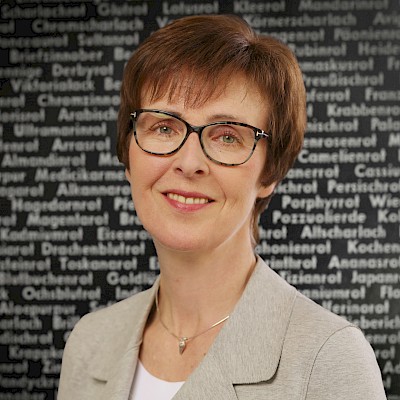Study of History, Dutch Language and Literature and Catholic Theology at the University of Münster. PhD Münster 1991 »›De last van ’t huys, de wil des mans...‹ Frauenbilder und Ehekonzepte im niederländischen Lustspiel des 17. Jahrhunderts« (1992). 1990-1998 Assistant Professor at the University of Münster. Habilitation Münster 1998 »Künstler als Helden und Heilige. Nationale und konfessionelle Mythologie im Werk J. A. Alberdingk Thijms und seiner Zeitgenossen« (2001). Since 2000 Professor of Dutch Literature at the University of Cologne. Co-editor and co-author of the reference work »Niederländische Literaturgeschichte« (2006). Her current research focuses upon the works of the seventeenth-century naturalist G.E. Rumphius in the context of early modern knowledge production and circulation between Asia and Europe.
Representations of the particular in Rumphius’ »Ambonese Curiosity Cabinet« (1705) and »Ambonese Herbal« (1741-50)
This project contributes to the history of knowledge in the context of the European colonial enterprise in Asia in the 17th and 18th centuries. The interaction of European officials of the Dutch East India Company (VOC) with the indigenous population in what is Indonesia today will be exemplified by the VOC-merchant G.E. Rumphius, who was stationed on the Moluccas, and the texts he produced there to show that the production of knowledge about nature overseas cannot be located exclusively in Europe. On the contrary, the production and reception of knowledge about natural history is situated in cultural contact between Asian and European actors and framed as a process of circulation with dynamics that constituted new spaces of knowledge between Europe and Asia. Within this productive Third Space a hybridisation of diverse forms of knowledge took place, as will be proven with analyses of the »Amboinsche Rariteitkamer« (Ambonese Curiosity Cabinet, Amsterdam 1705) and the six volumes of the »Amboinsche Kruid-boek« (Ambonese Herbal, Amsterdam 1741-1750). The project aims to describe and analyse the mediality and materiality of those dynamic spaces of knowledge that have been constituted by Rumphius’ texts and their contexts. The project makes accessible the two compendia, which are still in use as botanical and zoological references, from the perspective of cultural studies. During the Morphomata-fellowship, the devices by which the object descriptions in the ›Curiosity Cabinet‹ and the ›Herbal‹ represent the particular will be analysed.
